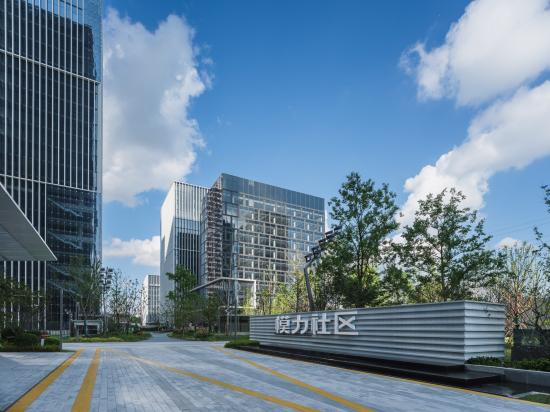BY Li Jiajia from CNS
Shanghai has built “Model Power Community”, a large-scale Artificial Intelligence (AI) models industry cluster area, with a total construction area of more than 200,000 square meters in Pudong New Area’s Zhangjiang Science City, aiming to foster vertical development within the model industry ecosystem and establish a new AI frontier.

This community can provide the platform effect of the upstream and downstream agglomeration of the industry and the policy care required for the growth of start-ups, gathering a large number of innovative pharmaceutical companies, according to Shi Huihui, CTO of Yanyin Technology, a biomedical company that located in “Model Power Community”.
Currently, the “Model Power Community” has attracted nearly 40 vertical model upstream and downstream ecological enterprises, including Xiaodu Technology, Yanxin Digital Intelligence, Weili Technology, and GuangBenwei. These enterprises cover various significant fields in the large-scale model industry such as underlying technology, application research and development, scene design, and computing power support.
“We can get closer to our customers and the industrial circle here”, said Shi, “We also found the upstream and downstream of the industry here, and even invited partners to move in together.”
“Model Power Community” relies on the industrial foundation of Zhangjiang Science City to build functional support platforms including computing power, corpus, algorithm call. This community is an important spatial carrier and ecosystem to drive the upgrading of AI industry with large models, according to Yuan Tao, the chairman and Party secretary of Shanghai Zhangjiang (Group) Co., LTD.
“We put more emphasis on industry driving and landing of various application scenarios”, said Yuan.
According to Guan Fenghua, Deputy General Manager of Shanghai Zhangjiang Science Gate Technology Development Co., Ltd., “Model Power Community” serves as a spatial platform that facilitates the settlement and exchange for large-scale enterprises. It provides a convenient space for the collision of ideas, fostering an environment that is more abundant and conducive to generating new scientific research outcomes.
“Model Power Community” can also function as a bridge and link between upstream application scenarios, midstream research and development activities, and downstream underlying technical support, aiming to enhance collaboration across different stages of innovation.
“Zhangjiang will leverage its existing open innovation center for large enterprises to provide comprehensive support in helping vertical model companies establish their tracks faster while offering improved market-oriented channels for obtaining more convenient application scenarios”, said Guan.
For Jin Yaohui, chief engineer at the Artificial Intelligence Research Institute of Shanghai Jiaotong University, the existence of virtual communities seems necessary. "The offline space provides a place for communication between people, and the industry needs a wider range of exchanges. We need to combine virtual and real, and allow the supply side and the demand side to find resources here."
As China's first artificial intelligence innovation and application pilot area, Shanghai’s Pudong New Area has shown a new trend of accelerating the integration of AI and economic and social development, especially in Zhangjiang Science City, which not only has the most perfect AI industry ecology in China, but also is one of the earliest regions to layout AI industry.
“The key to development is not simply to copy others, but to really open up the demand side, scene side and supply side capabilities in the community”, said Jin.